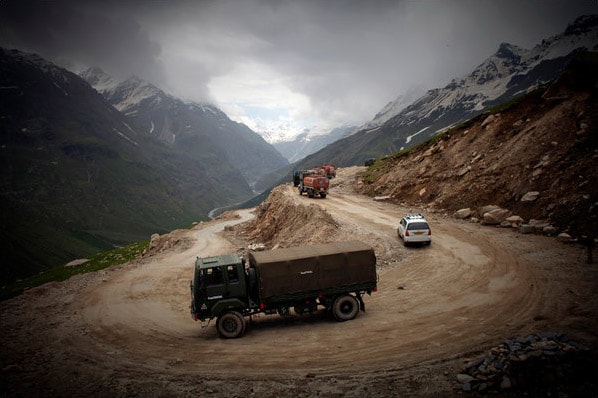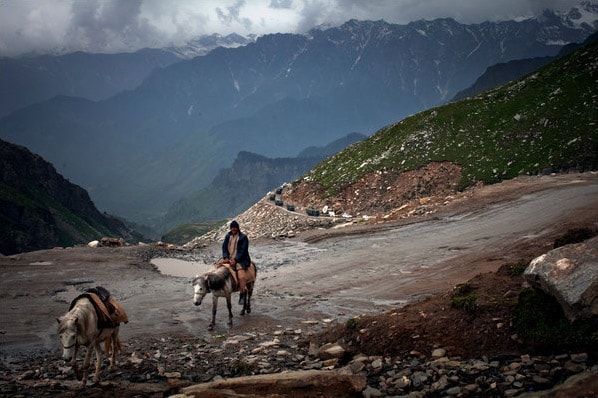India's Himalayan Tunnel
India is racing to match its rival China for regional and global power, building and bolstering airstrips and army outposts, shoring up neglected roads and - finally, decades after it was first proposed - building a tunnel to bypass the deadly Rohtang Pass.
-
Much of the 2,521-mile border between India and China is disputed or ill marked. In the past decade, as China has furiously built up its military and civilian infrastructure on its side of the border, the Rohtang Pass on the Indian side has stood as mute testimony to India's inability and unwillingness to master its far-flung and rugged outermost reaches. (NYT Photo)
-
Military vehicles descend the Rohtang Pass road. India is racing to match China for regional and global power, building and bolstering airstrips and army outposts, shoring up neglected roads and finally, decades after it was first proposed, building a tunnel to bypass the dangerous Rohtang Pass. (NYT Photo)
-
"What India is belatedly seeking to do is to improve its defenses by upgrading its logistics," said Brahma Chellaney, an analyst who track the India-China relationship at the Center for Policy Research in New Delhi. Construction is under way near Dhundi, in Himachal Pradesh. (NYT Photo)
-
In the distance, an Indian security force convoy rounds the bend as a man rides his horse along the Rohtang Pass road. India and China are hardly enemies, but the two countries fought a brief border war in 1962, and while these days they have, on the surface, a mostly cordial relationship, it is marked by tension over border disputes and the future of Tibet and its leader, the Dalai Lama, who lives in exile in India. (NYT Photo)
-
Villagers wait for a bus in the remote village of Sissu, near the planned northern terminus of the Rothang Tunnel. The road from Ladakh to Srinagar is also closed in the winter, and because of its proximity to the Line of Control that splits Kashmir between India and Pakistan, Indian officials worry that the road can easily be cut, as it was in 1999, when the two countries clashed at Kargil. (NYT Photo)
-
Vehicles climb the steep, winding switchbacks of the Rohtang Pass road. The challenges of building a long tunnel in the rough environment of the Pir Panjal are enormous. The Himalayas are the world's youngest mountain range. They shift and grind, still moving, expanding and shrinking. (NYT Photo)
-
A Tata sport utility vehicle sits wrecked at the bottom of a slope along the Rohtang Pass road. For workers on the tunnel, the nature of the Himalayas makes life very tough. No one is sure what kind or rock will be found inside the mountain. The tunnel will be built using a painstaking method of blasting and digging, rather than the tunnel-boring machines that have revolutionized tunnel construction in recent years. (NYT Photo)
-
Tourists atop the 13,054-foot-high Rohtang Pass. The tunnel will sit beneath more than a mile of snow-covered rock for much of its length. Ventilation will pose a huge problem. The tunnel will turn an ordeal of several hours, even in the summer, into a brisk 20-minute trip. (NYT Photo)
-
Young women go for a walk through the forest near Manali. People who live on the other side of the Rohtang Pass say the tunnel will transform their lives. "During summer, it seems very pleasant," one said. "In the winter, there is no light. No vegetables. No mail. Nothing to do in the evening. If there is an emergency, you are practically at the mercy of God." (NYT Photo)














